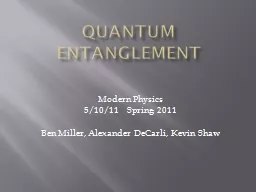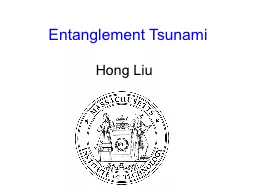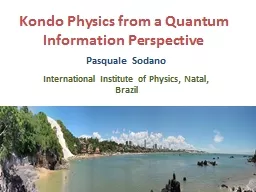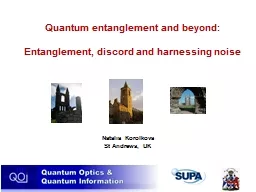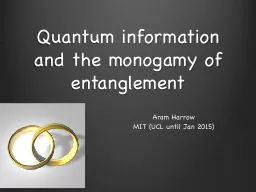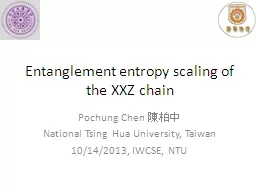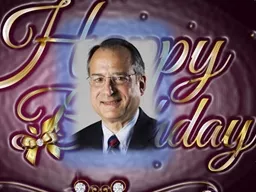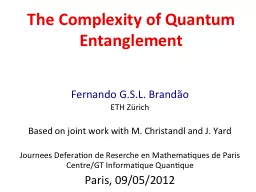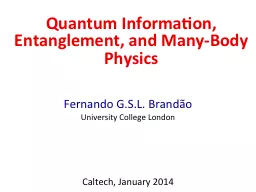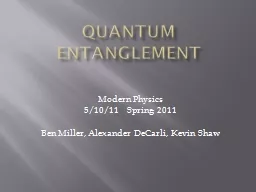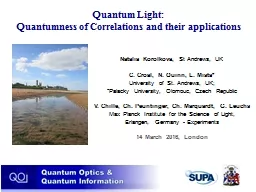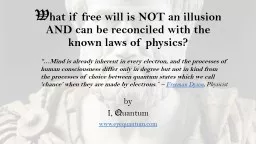PPT-Quantum Entanglement
Author : debby-jeon | Published Date : 2016-04-06
Modern Physics 51011 Spring 2011 Ben Miller Alexander DeCarli Kevin Shaw What is it How do particles become Entangled Parametric Down Conversion A laser usually
Presentation Embed Code
Download Presentation
Download Presentation The PPT/PDF document "Quantum Entanglement" is the property of its rightful owner. Permission is granted to download and print the materials on this website for personal, non-commercial use only, and to display it on your personal computer provided you do not modify the materials and that you retain all copyright notices contained in the materials. By downloading content from our website, you accept the terms of this agreement.
Quantum Entanglement: Transcript
Download Rules Of Document
"Quantum Entanglement"The content belongs to its owner. You may download and print it for personal use, without modification, and keep all copyright notices. By downloading, you agree to these terms.
Related Documents

